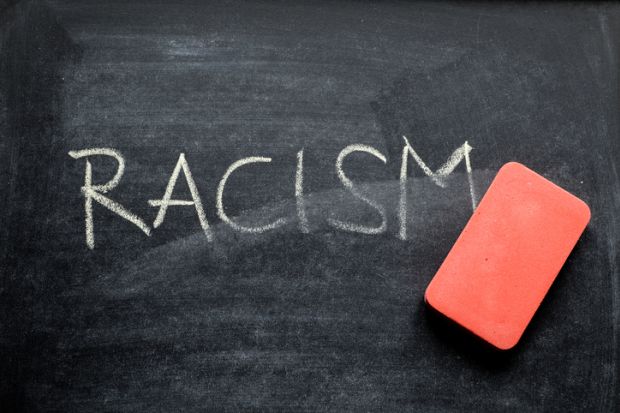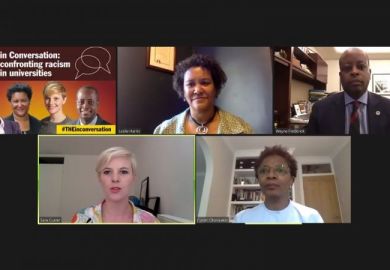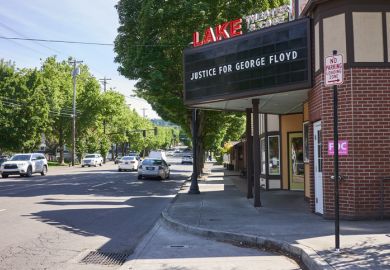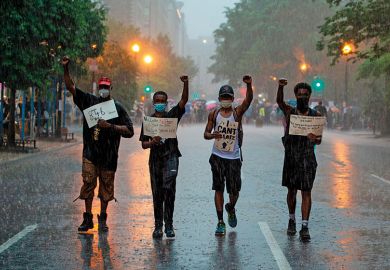Should international educators be in the vanguard of anti-racist education? This question was triggered by the recent police killing of George Floyd in Minneapolis. The long festering wound of racism on the American body politic has erupted yet again, with protests in hundreds of US cities and in more than 50 countries around the world. Indeed, the US is not unique in its practice of racism, the ugly consequences of which resonate deeply with millions of people. Protestors have marched in solidarity with those suffering under the proverbial boot of police brutality, against the injustices perpetrated by those who use state power in the service of racist ideology, and in repudiation of inequality writ large.
The coronavirus pandemic and massive job losses, both of which have exacted a heavy and disproportionate toll on African Americans, have only served to exacerbate the anguish of the present moment.
It is critical that we interrogate the role of international educators in anti-racist education. In the US, international educators have largely left this work up to chief diversity officers and to professors who teach these topics in their respective disciplines.
Be it the inability to see a connection between racism and international education, the lack of direct experience as victims of racism (the overwhelming majority of international educators are white), or a belief that anti-racist education does not fall within their wheelhouse, international educators largely stay away from active engagement in this agenda, even to the point of not adequately preparing students who may encounter racism in international education.
In the wake of George Floyd’s murder and the overwhelming global response, it is no longer possible to be silent. While international educators have historically been engaged in cross-cultural and intercultural education, this does not always neatly map onto issues of race. But such intercultural work is the flip side of diversity education and the parallels are plentiful and similar enough to obligate international educators to be just as energetically engaged with anti-racist education.
Additionally, white supremacy is a global challenge that represents a direct assault upon the ideals that we have long determined are necessary for humans to live their best lives and realise their fullest potential.
The global victims subjected to forms of oppression similar to those experienced by African Americans in the US, demand the attention of international educators. Thankfully, the global reach and the racially diverse nature of the protests suggest that there is a growing consensus for the eradication of racism and inequality. More people are now insisting on leadership that will dismantle the institutional structures that have allowed racism to flourish.
How then can international educators lead in crafting a vision for a post-racist world? How can they leverage the multiple tools that intercultural learning and cross-cultural communication provides to develop the next generation of anti-racist leaders? How can they work to normalise cross-cultural and intercultural diversity in the communities that they inhabit?
There are significant opportunities for international educators to inspire student engagement with racial and social justice issues. In addition to exchange and mobility programmes, the most consequential opportunity is through the curriculum, because this touches all students.
This can be achieved through specific and intentionally stated learning outcomes related to intercultural development. With the growing emphasis on personal agency, students can also be invited to cocreate their own learning outcomes related to intercultural learning and racial and social justice within the context of learning contracts. Meanwhile, it is imperative that the hidden curriculum be thoroughly examined by interrogating which voices are missing and whose knowledge is being privileged.
Not surprisingly, students may be further along in this journey than even their professors. The efficacy of these initiatives can be augmented when used in tandem with service learning strategies within the surrounding communities.
As a high-impact practice, service learning allows for students and faculty to have meaningful human engagement with community members, particularly with those who may look and think differently. This facilitates collaborative opportunities to identify, confront and dismantle systems of oppression that stand in the way of social justice. In the end, engaging with communities that, in some instances, are mere steps from the home institution, can be as effective as sending students to universities abroad.
Intercultural and global competencies are critical skills for all who engage with diverse others, whether in the workplace or in daily life. These competencies aid in bridge-building, especially in a globalised world that requires more interaction, and where historically marginalised voices are demanding to be heard and respected.
A bridge builder seeks out different perspectives, listens for understanding (not response!), develops empathy, cultivates curiosity, and demonstrates respect, especially with those who may not hold the same ideologies and positions. These skills are all components of intercultural competence that international educators can champion.
In fact, the United Nations Educational, Scientific and Cultural Organization (Unesco) has successfully piloted an intercultural methodology that allows participants of all ages to practise these very elements through story circles that are now being piloted virtually (see the open access Manual on Developing Intercultural Competencies: Story Circles). Story circles can be used, for example, by professors at the beginning of a course to bring diverse students together in meaningful ways as they develop authentic relationships with each other.
Finally, many international educators are skilled at identifying stereotyping in international programming. By turning the lens from the global to the local, they can deploy these skills in partnership with colleagues in multicultural offices to identify and counteract instances of bias and stereotyping within university policies, curriculum and programming.
International educators and multicultural educators have the skills to guide others through difficult conversations, working through tensions and issues in order to bring about not only more awareness of racism and inequality, but also clear strategies to end them.
Harvey Charles is a professor of international education at the University at Albany, SUNY and Darla K. Deardorff is executive director of the Association of International Education Administrators and visiting research scholar at Duke University.
Register to continue
Why register?
- Registration is free and only takes a moment
- Once registered, you can read 3 articles a month
- Sign up for our newsletter
Subscribe
Or subscribe for unlimited access to:
- Unlimited access to news, views, insights & reviews
- Digital editions
- Digital access to THE’s university and college rankings analysis
Already registered or a current subscriber?




